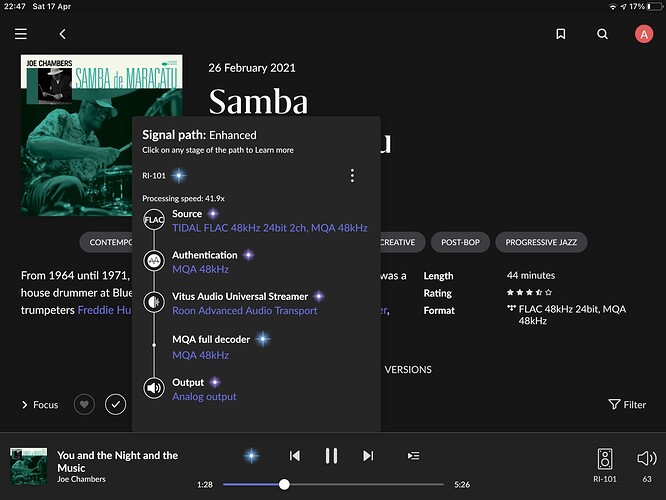Ok, I’ll dig in a bit deeper to explain.
First, let me talk about the differences in your CPUs:
The J4125 is a great CPU, fast, inexpensive, but the i7 in the nuc8i7be is a beast compared to it. It can dance circles around that J4125 in so many ways. Another non-obvious properly that your 8th generation i7 is its power management system. It’s a far more flexible system that can really reduce power consumption by slowing down or turning off parts that are unneeded.
Now, let me explain how that processing number works:
It’s not a measure of computation power, nor is it a measure of how much work is being done vs the capacity of work capable of your processor. It’s just how much time it took to do something in a certain time slice. For example, if it took 10ms to run the DSP for 100ms of your audio stream, then it says “10x”. That’s what I meant by “it’s an indicator of what’s being done”.
While it’s very tempting to say that that’s comparing apples to apples, it’s not when your CPUs are different. For example, that i7 can greatly scale itself down to be much slower than the J4125. In fact, you can run that i7 much slower than the J4125, and it’ll still easily outperform it. That J4125 is more like a traditional car 5 gear transmission and the i7 is like a CVT.
To explain the numbers you see, my guess is that the J4125 is running at full performance when you get those numbers, and the i7 is running at a minimal performance. It’s why I suggested you run two of those zones. I wouldn’t be surprised if the number doesn’t change much on the i7, but does on the J4125. If neither change, try a 3rd zone, or 4th zone, or 5th zone, etc… It will eventually break (go below 1x) on the J4125, and the i7 will keep purring along. That’s why that number is not a good measure of CPU performance.
Your ROCK is running that CPU in a manner to keep that CPU cool, and to keep it idle. There is no point to run it fast when it’s going to spend all it’s time doing nothing. That would just be turning power into heat.

 - when leaving the general lots of reserve recommendations, if DSP isn’t important, rooms are unlikely to exceed like two and power saving becomes a less a goal since the device is busy anyway, one could use these Celeron type of CPUs in NASses with a satisfying user experience.
- when leaving the general lots of reserve recommendations, if DSP isn’t important, rooms are unlikely to exceed like two and power saving becomes a less a goal since the device is busy anyway, one could use these Celeron type of CPUs in NASses with a satisfying user experience.